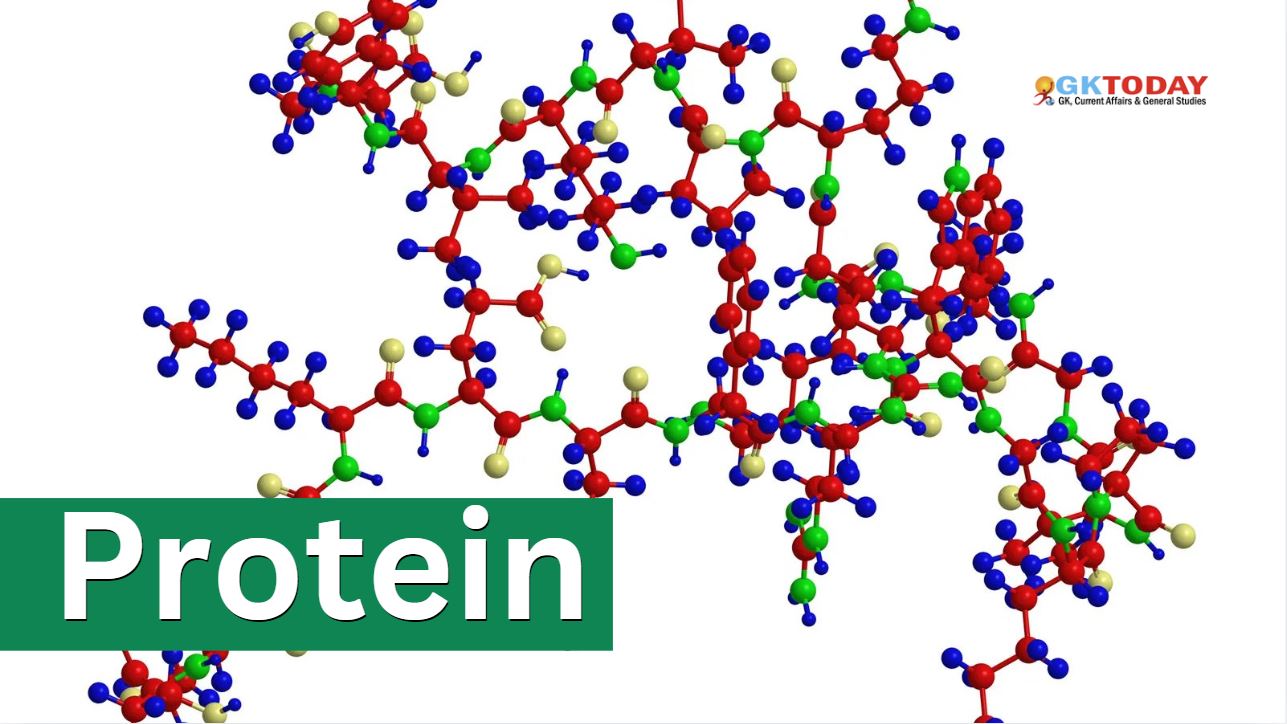Protein
Proteins are made up of chains of amino acids bound by bonds called peptide bond. There are some 22 different known amino acids which can compose proteins. There may be many more unknown to us.
Functional Versatility of Proteins
Numerous combinations of amino acids can form different polypeptide chains and thus a great variety of proteins can be produced. Consequently, proteins can take different configurations and thus play role in a lots of biological processes. Thus, there are several types of Proteins which do specific functions as follows:
- Defensive Proteins: Antibodies that respond to invasion
- Enzymatic Protein: Increase the rate of reactions, build and breakdown molecules
- Hormonal Proteins: Insulin and glucagon, which control blood sugar
- Receptor Proteins: Cell surface molecules that cause cells to respond to signals
- Storage Proteins: Store amino acids for use in metabolic processes
- Structural Proteins: Major components of muscles. Skin, hair, horns etc.
- Transportal Proteins: Haemoglobin carries oxygen from lungs to cells
Formation of Proteins
Amino acids are the basic units of proteins. There are 22 known amino acids and many more might be there unknown to us. Each amino acid has at least one carboxyl group –COOH, one amine group – NH₂ and an hydrogen atom –H. Further, there is a variable radical called -R. All of these are bound to a central carbon atom as shown below:

The R may be a complex chain of carbon atoms, or simply a methyl group or even a hydrogen atom. R is what distinguishes one amino acid from others. Two amino acids are bound by a peptide bond as mentioned above. The peptide bond is such that carboxyl group of one amino acid is connected to the nitrogen atom of the amine group of another amino acid. A molecule of water is released when such bond is established as shown below:

As shown above, many amino acids can bind through these peptide bonds and create linear chains. We note here that the same amount of amino acids can create different proteins because the difference depends on the types of amino acids or on the sequence in which they form the protein.
A chain of more than 50 peptide molecules is called Polypeptide. Proteins have very complex structural patterns of these polypeptides. They require up to four levels of structure in order to be functional. The four levels of Protein Structure are as follows:
- Primary: Polypeptide chain of up to 500 amino acids covalently bonded. The sequence is important and unique for each polypeptide.
- Secondary: The formation of hydrogen bonds between nearby amino acids causes the polypeptide chain to twist and/or pleat.
- Tertiary: Distant amino acids form bonds and associations in reaction to changes that occur in the secondary level.
- Quaternary: Two separate polypeptide chains intermingle to form a molecule that has a larger, more complex structure than that found in the other protein levels.
This structural complexity makes the proteins so versatile that relatively slight environmental changes cause a shift in structural levels that may be sufficient to radically change the function of the protein.
Further, the secondary, tertiary and quaternary structures of a protein are spatial structures. If there is any change in that spatial structure, the protein will denature and cease to do the function which it was supposed to do. This denaturation may or may not be reversible. The factors that cause such denaturation include change in temperature, change in pH, change in concentration of solutes in surrounding environment etc. This is the reason that organisms need to maintain stable internal temperature and pH so that proteins including enzymes etc. can do their normal jobs.
Cooking and Denaturation of protein
When we cook food, proteins become denatured. This is the reason that the boiled eggs become hard and cooked meat become firm. In an unboiled egg, the egg white is transparent and liquid. When its boiled or cooked, egg white turns opaque and solid mass.
Essential and Non-essential amino acids
Some 12 of the 22 known amino acids can be synthesized in our body. These are non-essential. Essential amino acids are those that the body is not able to synthesize and which need to be taken as diet. Examples of some of the essential amino acids are {don’t cram→} phenylalanine, histidine, isoleucine, lysine, methionine, threonine, tryptophane and valine.
Examples of Common Proteins
- Myosin protein when bound to actin produces a muscle contraction.
- CD4 is a membrane protein in some lymphocytes, the cells that are infected by HIV.
- Albumin is an energy storage protein and also an important osmoregulator of blood.
- Keratin is a protein with a structural function and which is present in the epidermis and skin appendages (hair, nails) of vertebrates.
- Immunoglobulins are antibodies, specific proteins that attack and inactivate foreign agents that enter the body.
- Reverse transcriptase is the enzyme protein responsible for the transcription of RNA and the formation of DNA in the life cycle of retroviruses.
- Haemoglobin is the protein that carries oxygen from the lungs to cells.
- Insulin is a hormone secreted by the pancreas that participates in the metabolism of glucose.


